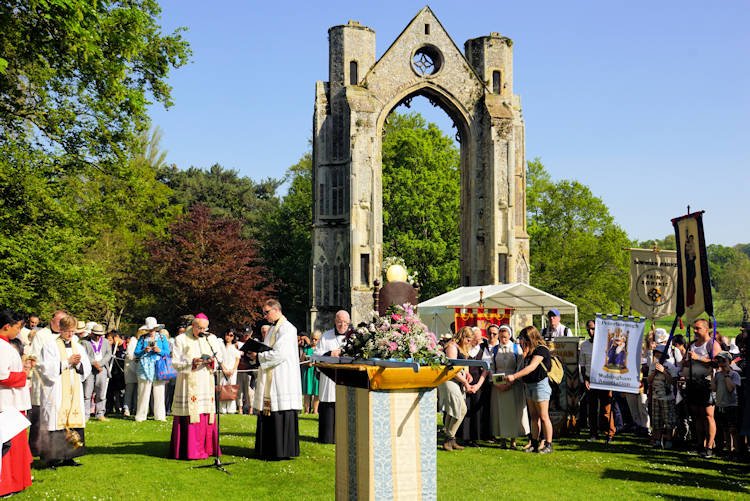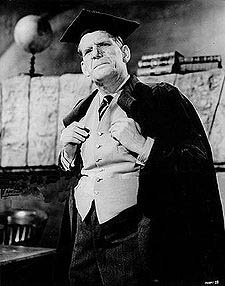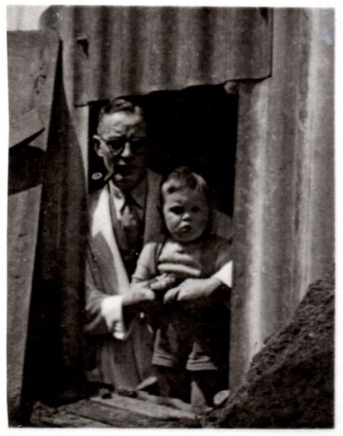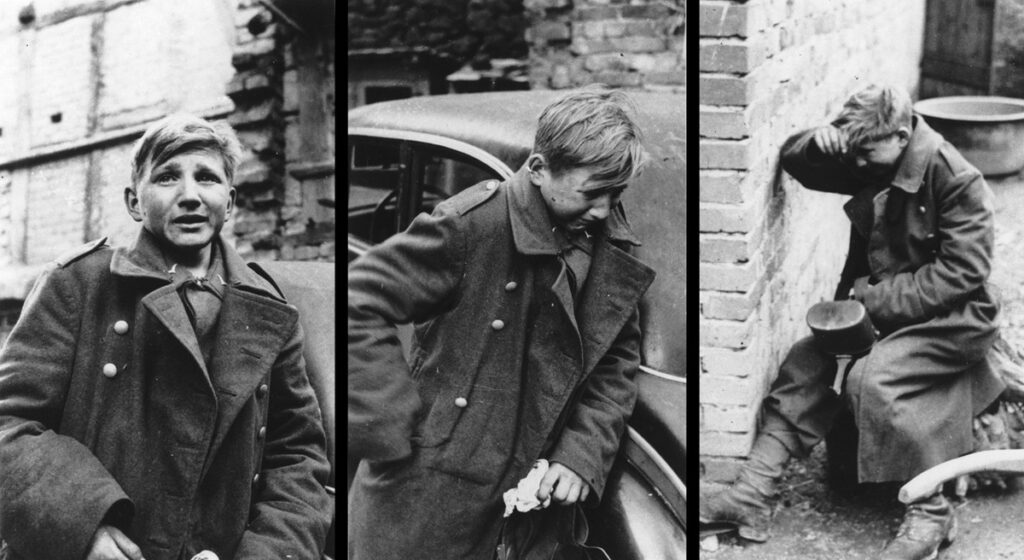Whan that Aprille with his shoures soote,
The droghte of March hath perced to the roote,
And bathed every veyne in swich licóur
Of which vertú engendred is the flour;
Whan Zephirus eek with his swete breeth
Inspired hath in every holt and heeth
The tendre croppes, and the yonge sonne
Hath in the Ram his halfe cours y-ronne,
And smale foweles maken melodye,
That slepen al the nyght with open ye,
So priketh hem Natúre in hir corages,
Thanne longen folk to goon on pilgrimages.
(So starts the Prologue to the Canterbury Tales by Geoffrey Chaucer)
Introduction
April is past (just) and familiarity with Middle English cannot always be assumed – even with SUES members! However, the above quotation seemed to be so appropriate in linking the time of year with our leading article that we couldn’t resist the temptation to start with it. It also reminds us of our plan to have a poetry meeting in June. On that subject we wonder if could do something through this Forum. This would involve members submitting a favourite poem with a paragraph on why they like it and how they respond to it. Of course, the poems would have to be relatively short ones to be included in this publication. We could either run this as a regular feature or devote a whole Forum to it. Let us know your ideas and we’ll say more about this in the next Forum.
Our fourth number starts with an article by our chair, Hazel Fort, who adds to her description of Walsingham some personal thoughts and experiences. In a lighter vein Alan Potter reminds us of a man who was well-known as a comedian, but who had another life as a scientist. Continuing with personal experiences, as we approach VE Day John Sharp has contributed some reminsicences – and has had the temerity to submit a poem of his own writing (poetry again). Perhaps this will inspire other members to contribute their own memories of and responses to historical events. Do let us know if you have any comments, suggestions and contributions. We still don’t know when we will be able to reopen for live business, but we do have plans for a full programme next year, if and when Covid-19 permits.
Walsingham
Hazel Fort

Santiago da Compostella. Lourdes. Mecca. Fatima. Canterbury. Jerusalem. What do these have in common? Have you ever been to one of them?
Dictionary Definition:
Pilgrimage: a visit to a place considered special; a trip to somewhere to show your respect; a trip to a holy place as an act of devotion.
Of course, they are famous sites of pilgrimage. Most of them bask in their reputations and have large towns built around them. Most of them are packed with pilgrims at various times throughout the year. Most of them are surrounded by multiple tourist outlets which bring in ample financial rewards. But what about Walsingham?
Walsingham is a tiny and, some would think, unremarkable village in Norfolk. It just happens to be the most popular place of pilgrimage in England. Known as ‘England’s Dowry’, on March 29th, 2020, it celebrated the Rededication of England to Mary, Mother of Jesus. It was a joyous occasion for the thousands of Roman and Anglo-Catholics living here. So, what makes Walsingham so special? Why was it singled out?
In 1061, Richeldis de Faverches was taken in spirit, by Mary, to Nazareth, to the house where the Annunciation took place. She requested that Richeldis initiate the building of a replica of the house, promising, whoever seeks my help there will not go away empty handed.’ Richeldis obeyed and caused a small house to be erected which became known as the Holy House. A priory to look after the needs of pilgrims, thousands of whom came, was established. It became the third most visited shrine in the world superseded only by Jerusalem and Rome.
In 1340, the Slipper Chapel was built in Hoghton-St Giles. Here the pilgrims could hear mass before they removed their foot wear to walk the Holy Mile to the Shrine barefoot. The Shrine was visited many times by the kings of England. Indeed, a triptych shows Richard II offering England to Mary as her dowry. It seems ironic that Henry VIII visited Walsingham to give thanks for the birth of his son (1511) for later he it was who gave orders for the shrine’s destruction during the Dissolution of the Monasteries (1538). The Shrine was burned to the ground and the famous statue taken to London to be burnt. Although, just recently, there has been the discovery of a statue in London which suggests it survived.
In 1896, the Slipper Chapel was bought by Miss Charlotte Boyd and restored. For centuries, this little building had had many secular uses including a cattle shed and barn. In 1897, Pope Leo XIII approved it as a shrine to Our Lady. The famous statue was recreated in Oberammergau and presented to Walsingham. In 1934, the first mass was celebrated there and, a few days later, Cardinal Francis Bourne led a pilgrimage of 10,000 people to the Shrine and declared it a Catholic National Shrine to Our Lady.
In 1921, Anglican interest was ignited by Father Alfred Hope Patten. He wanted the new statue, based on the engraving of the ancient seal, to be given a special place in the parish church of St Mary. A small pilgrim church was built and the flood of pilgrims began. Within the small church, a replica of the Holy House was built in 1931. In 1938, the extension of the Shrine church was completed and it became the Anglican National Shrine of Our Lady of Walsingham. This became an ideal example of Christian Unity.
After that very brief potted history, you might still be asking, so what is her interest in this nondescript Norfolk Village?
I first visited Walsingham at the end of the sixties and have visited it many times since. I was a student of History, and the village clings to its mediaeval touches. It is exceptionally peaceful there. Once Dr Beeching had got rid of the railway line, the old station house became home to Russian monks who created icons and a tiny Russian Church. In fact, St Seraph’s still delights the eye – who could imagine such things of beauty created in the waiting room of a train station? Go in and take a look!
Are you in need of healing? Spiritual? Physical? Mentally? Go into the Anglican Shrine in the afternoon and take in one of the healing services there. Look at the old school in Friday Market Street with its signs ‘Boys’ and ‘Girls’ engraved in the stone façade. For a Prayerful experience, walk the Rosary Walk which follows the old railway track. Walk through the countryside to Hoghton St Giles and the Slipper Chapel. Take part in a Student Cross procession in Holy Week. Or do the journey in reverse and enjoy a tour around the gift shops and cafes at either end. Food for the spirit can be found at the Slipper Chapel (so incredibly small), The Basilica of Our Lady or the Church of the Annunciation or the Shrine itself – there are plenty of opportunities.
A medieval feast for the eyes Walsingham might be, but it has not isolated itself from the twenty first century. Wi-Fi is now accessible. Religious services are now streamed all over the world, a comforting bonus in these times of the Coronavirus when so many of us have had to cancel 2020 pilgrimages. In these times of lockdown, when most of us were looking forward
I will miss Walsingham desperately this year. Not simply to make my own pilgrimage. Walsingham provides the ideal location for future reference. When the airlines get back to normal (or is if ?) or when the cruise lines re-establish their ocean crossings, will people trust them immediately? This pandemic could mean a real boost for Britain once more and Norfolk provides a superb replacement for the Riviera. The beaches are superb; often clinging to the sandy shore of some tiny fishing village. In the summer, the temperatures are rarely cool. The scenery is beautiful and the roads zig zag across a flat countryside giving one the most marvellous views. Sandringham and Holkham Hall are but two of the attractions for the history buffs… but then, there is Walsingham.
I became one of the Chaplains at a Bootle School four years ago and I decided to take a group of students to Walsingham. I was full of trepidation. What could Walsingham offer to streetwise, Wi-Fi obsessed Bootle kids?
We were embarking on our third pilgrimage this year. Fully booked. Walsingham worked its magic especially on boys usually found on the ‘naughty’ bench. They enjoy Mass. They enjoy the Rosary Walk chanting the Rosary with a solemnity my colleagues find amazing. They pray in the churches. They are polite and well-behaved – witness their welcome by the villagers. They undergo the most amazing sea-change… and when it is time to go, their first question as we head homewards is: ‘We are coming next year, aren’t we?’
Follow-up points to consider:
- Do you think pilgrimages are outdated?
- Have you ever been on pilgrimage? Did you come away feeling refreshed? Fulfilled?
- Do you think young people should benefit from this experience? How? Or, are they too caught up in technology?
- Walsingham makes use of modern technology: the old and the new unite to bring comfort – do you think this is appropriate?
Where There’s a Will, There’s a Hay
Alan Potter

Will Hay was one of Britain’s most popular comedians and his unique approach to comedy and very funny films are great entertainment even today. Will, born in Stockton-on-Tees in 1888, was not well educated but was multi-talented. His father was an engineer and travelled around the country. Will went to many different schools and finally evening classes in Manchester. Even during this time, however, he learned to speak French and Spanish, getting work as a translator.
He married Gladys Perkins, of Salford in their late teens and they had three children. The marriage broke down in 1934, but the couple never divorced; Hay subsequently formed a relationship with Randi Kopstadt, a Norwegian showgirl and went on to speak both Italian and Norwegian.
Will Hay embarked on a music-hall and concert-party career having tried several times to enlist for active service in the First World War but was rejected on medical grounds. His first sketch, ‘Bend Down’, was based on the stories of his sister, Elspeth, who was a schoolteacher and from about 1920 his main sketch was ‘The Fourth Form at St Michael’s’. It soon became something of a national institution and was featured many royal command variety performances. He toured Australia, New Zealand and the USA successfully where many British comedians had failed. Cautious with money, he could be very off-hand with fellow professionals and he was said to be ‘more respected than loved’.
Hay transferred his mastery of comic timing and expression to film more successfully than many other British comedians. Most famously in concert with Graham ‘Albert’ as the impertinent fat boy, and Moore ‘Harbottle’ Marriott as the resilient ancient, he made some seventeen films between 1934 and 1944. These included Oh, Mr. Porter! (1937), with Hay as the troubled stationmaster of Buggleskelly, which is regarded as both the most popular and critically acclaimed, together with Good Morning, Boys (1937), Ask a Policeman (1939), The Ghost of St Michael’s (1941), and My Learned Friend (1944). His best work has been favourably compared with the screen antics of the Marx brothers.
Hay played his pathetic, seedy characters with strong backgrounds and interesting personal histories, which led his audiences to feel sympathy as well as disdain. The tilted mortarboard, the crumpled gown, the wispy hair, the slightly husky voice, the disapproving sniff, and above all the pinched eyeglasses, provided a focus for a wide range of facial reactions, that were the physical keynotes of often unforgettable characters.
However, although he was a professional comic actor, he was also a studious, serious and knowledgeable man. Although largely self-educated, he gained a passion and ability for science, astronomy, sailing. His particular interest in astronomy led to him being a member of the British Astronomical Association (BAA) for the last 17 years of his life. He called astronomers ‘the finest brotherhood on earth’ as they are the only ones who ‘see life in its true proportion.’ He went on to suggest that ‘if we were all astronomers there would be no more wars.’ He was so committed to astronomy that he built his own observatory and in 1933 made a remarkable discovery.
In August of that year, Hay, who was already well known for entertaining audiences at the time, hit the newspaper headlines for an entirely different reason. On 3rd August he had, in fact, noticed a huge white spot on the surface of Saturn, the ringed planet. Using his six inch (152 mm) Cook refractor telescope he made the discovery at precisely 22:23 GMT. Other astronomers also noticed the spot soon afterwards. but Hay was the first and, indeed, it was the first of 14 notable observations he made about Saturn.
Will Hay died from a stroke in 1946 at his London flat, in Chelsea. Success came to him only later in life and through much self-study and hard work. His unique legacy as a comedian is something that is still recognised and enjoyed today. However, is also remembered by many for his love of science, particularly astronomy, about which he was equally passionate and adept.
VE Day (8th May 1945)
John Sharp

This year marks the 75th anniversary of the ending of World War Two in Europe. (Later in the year it was concluded in Asia as well.) I was a child of 6 at the time, and one of the first things I actually remember reading was a newspaper headline ‘Hitler is dead’. Hitler committed suicide on 30th April, but it took a few days before unconditional surrender was agreed. I also remember parties and bonfires.
One of my earliest visual memories is of an air raid shelter in our back garden. We lived in Liverpool, a target for the bombs of the Luftwaffe, and the shelter was regarded as a necessary refuge at a time of attack. My father had a chemist’s shop and so was in a reserved occupation and did not have to enlist. He was, however, in the Home Guards. I did see him in uniform, but my standard memory is the white coat – and the pipe. I also heard later the story of my mother rushing into the shelter and finding it flooded. She nevertheless took refuge, up to her waist in water and holding me in the air, all the time ordering Hitler ‘to leave my baby alone’. What follows this item is a poem inspired by these memories.
VE Day is worth commemorating, but not solely in a narrow nationalist spirit: there were victims on both sides. As the Russians advanced on Berlin and the German armies were depleted of men, Hitler enlisted and armed boys, some as young as 16. This triptych is a powerful image of Nazism in defeat. The boy was probably devoted to Fuehrer and Vaterland, but now he is captured. However, the expression on his face shows that he is just a kid, caught up in the horrors of war.

Shelter
John Sharp
There it was, a mound, a hole that gaped,
Leading below the ground; home to goblins, elves
The child thought, or some hidden kingdom.
Perhaps it was the road to Hell.
A haven, thought the father,
Safety’s in the ground, danger’s in the air.
The child frowned at the world, but not with a knowing
Of threat; the father reassuring in his
Pharmacist’s white coat, smoking his signature pipe.
The skies were a holy blue: angels lived there
The child thought, and God.
The father scanned them, uncertainly,
Distrusting their apparent innocence.
The hole was a second home,
Closer, more intimate than the first,
A womb in the night that was to come,
A road to Heaven not to Hell.
Later the sirens wailed, the family moved quickly,
Quietly, easily into the space, the child dozing,
Carried and laid down to sleep,
Undisturbed by tumult and catastrophes,
Not with a knowing of rage above,
Where demons screamed and struck.
No angels there that night, only fire
Tore the sky and death-dealing hate.
They were spared at Christmas, did not need
That stable, that manger, empty in the cold:
For them there was room at the inn,
And gifts, not brought by kings, but by
An imagined man with beard and red cloak
Or the unimagined father with the white one,
Not khaki that day, though still
Guardian of the home and the small family.
A pause of peace in the roar of conflict,
To be people again, to live the norms of life,
Just a short pause before the grinding engine
Of war moved on: they needed the shelter then.
A mother plunged in the flooded hole,
Holding high the child and railing against
The black elements that threatened him
And calling on angels to aid.
A picture in an album tells a chapter,
The old man looks back reflecting.
Was I there at that historic moment,
Not with a knowing, sharing but not sharing
The titanic struggle for life and freedom?
Did the event mark me or make me?
Forces shape our lives, forces of men,
Not angels, though angel-like they
Fought and saved us. Not with a knowing
But a thanking I survey those days.
Responses
Mary Ormsby is wondering if anyone knows anything about Joseph Mathias Fawke. gentleman. He was a cabinet maker based at 239 Lord Street from the 1850s. ‘My interest is that he built the Lady Altar and organ casing at St Elizabeth’s church in Scarisbrick and I’d like to include a brief biography in the new church history. I have bmd records etc from Ancestry and a photo of his grave but nothing else.’ Contact mormsby@btinternet.com
Margaret Gregson wrote, ‘to say thanks for organising the SUES Forum. I particularly enjoyed the article on the periodic table as my degree is in chemistry. I also appreciated the reference to Tom Lehrer. I remember having a tape cassette of his songs when I was at university. I now have a CD. It would be good if some clever person could write a Tom Lehrer type song about the current situation – possibly ‘the isolation tango’. Anyone have a go?
Contacts
Chair: Alan Potter
alanspotter@hotmail.com
07713 428670
Secretary: Roger Mitchell
rg.mitchell@btinternet.com
01695 423594 (Texts preferred to calls)
Membership Secretary: Rob Firth
suesmembers74@gmail.com
01704 535914
Forum Editor: Chris Nelson
chris@niddart.co.uk
07960 117719
Facebook: facebook.com/groups/southportues
See our archive for previous editions of the SUES Forum!